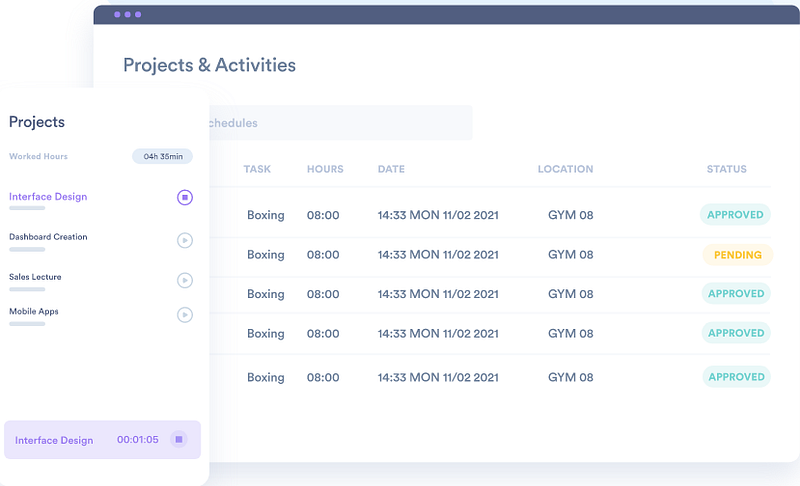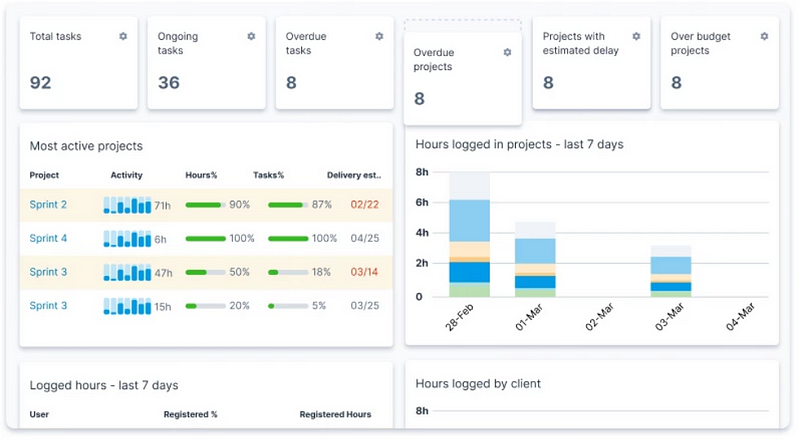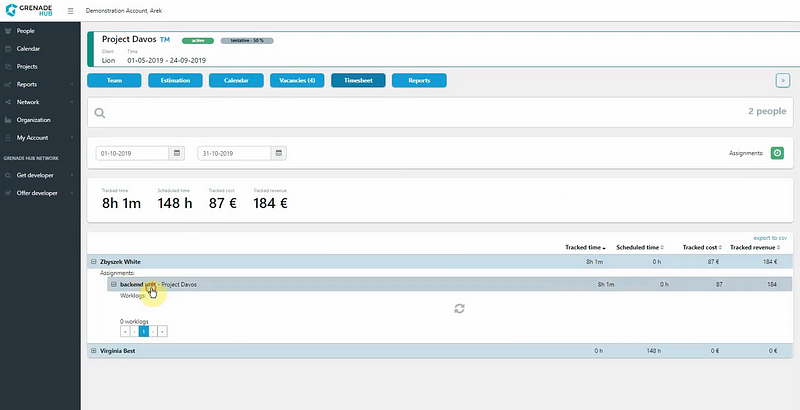If you want to make informed project management decisions, it’s time to put your data to work. Relying on guesswork or instinct when it comes to project cost analysis is an unreliable and often costly approach that can quickly derail even the best-laid plans.
Savvy project managers leverage data-driven insights for a competitive edge and a more profitable outcome. In this article, we’ll explore how leveraging data for project cost analysis gives you the upper hand and helps ensure success.
From defining cost analysis to providing step-by-step guidance with the best tools available, you’ll learn all you need to make smart, data-driven decisions. Let’s dive in!
Throughout this article, we’ll discuss:
- What is Project Cost Analysis?
- Benefits of Data-driven Project Management Cost Analysis
- Step-by-step Cost Analysis in Project Management
- Tips and Best Practices for Cost Analysis in Project Management
- Best Tools for Data-driven Project Cost Analysis
- Wrap-up: Leverage Data for Effective Project Management Cost Analysis

What is Project Cost Analysis?
Project cost analysis analyzes project costs to ensure they are accurate and aligned with established budgets. This includes assessing the cost of materials, labor, overhead expenses, and other factors involved in project completion.
Project cost analysis helps identify hidden costs that may not have been factored into initial budget estimates so that these can be addressed before beginning work on a project. Managers can better allocate resources while achieving desired outcomes by evaluating current and future costs associated with a particular project.
Benefits of Data-driven Project Management Cost Analysis
Data is a powerful tool that helps project managers make more informed decisions regarding cost analysis. By leveraging data, managers can better anticipate and manage costs throughout the entire lifecycle of a project. This is especially true during economic uncertainty when budgets are tight, and every penny counts.
Data-driven insights offer invaluable advantages such as:
- Improved accuracy: Data eliminates guesswork and ensures that estimates are based on reliable information rather than subjective opinions or hunches.
- Enhanced predictability: With more accurate data, you can better anticipate future costs related to a particular project and plan accordingly.
- Increased efficiency: Data-driven cost analysis can help project managers make more effective decisions in less time by providing timely insights into current and future costs.
- Better project viability analysis: You can evaluate the viability of a project by examining cost analysis data to determine if it can be undertaken in its current state or needs adjustments.
- Best-case and worst-case analysis: Data-driven cost analysis allows for evaluating best and worst-case scenarios by analyzing labor costs, overhead expenses, materials costs, etc. This helps project managers prepare for potential setbacks and adjust their strategies accordingly.
- Real-time cost factor adjustment: During cost analysis in project management, managers can adjust cost factors in real-time to ensure that the project remains on budget and within scope.
7 Step-by-step Cost Analysis in Project Management
Project cost analysis is a critical task in any project management strategy. Here are the steps you should follow when performing a cost analysis:
1. Identify Goals
The first step in any cost analysis is to identify the goals of your project. Ask yourself what you are trying to achieve and how much it will cost. This information will help you set realistic budgets for each project phase.
Your possible goals may include the following:
- Reducing project costs
- Increasing efficiency
- Improving customer satisfaction
2. Identify Stakeholders
The next step is to identify the stakeholders involved in your project. Understanding who will be affected by any changes or decisions you make is critical for successful cost analysis.
Common stakeholders include customers, vendors, suppliers, and team members. Knowing who these people are allows you to get their input on the various aspects of your project that may affect its budget. This can help ensure that everyone’s interests are considered before proceeding with a particular strategy.
3. Determine Analysis Measures
You can use various measures to evaluate the costs associated with your project. The most common measure is a cost-benefit analysis, which allows you to compare the benefits of a particular strategy against its costs. This helps you make profitable decisions in the long run and ensures that all stakeholders are considered when making changes.
4. Gather Raw Data
The next step is to collect data about your project’s costs and any potential changes or additions you may need. This could include anything from labor hours and material costs to overhead expenses like rent, insurance, etc. It’s essential to take accurate measurements to analyze the data effectively.
5. Calculate Net Present Value
The NPV, or Net Present Value, is a financial metric used to measure the value of a business opportunity. It measures the potential returns from an investment over time, considering factors such as inflation and discount rates. The NPV can help you compare potential profits and losses when working with multiple projects and time frames.
6. Adjust for Sensitivity
You can adjust your analysis to account for potential changes in the future, such as inflation or a shift in market conditions. This allows you to make informed decisions that take into consideration any potential risks associated with specific investments over time.
7. Report and Analysis
Finally, you’ll need to report and analyze your findings so that project stakeholders have an understanding of the costs involved and their implications on the overall success of the project. You should also be prepared to discuss potential changes or adjustments that may be needed if certain assumptions prove incorrect.

Tips and Best Practices for Cost Analysis in Project Management
Project cost analysis is an invaluable tool for managing and controlling project costs. Here are some tips and best practices to ensure you get the most out of your data-driven insights:
- Cost management strategy: Define a strategy for cost management before beginning work on the project. This will help you to identify any potential issues that may arise in the future, as well as provide a roadmap for successful completion.
- Budget parameters: Establish budget parameters at the outset of each project to avoid costly overruns later on. Be sure to factor in all foreseeable costs, including materials, labor, overhead expenses, etc., so that you have an accurate picture of what’s needed to complete the project on time and within budget.
- Continuous monitoring: Monitor costs regularly throughout the lifespan of the project to ensure they remain in line with expectations. This will provide an early warning system for any potential issues that may arise and allow you to take corrective action if necessary.
- Utilize historical data: Analyze data from prior projects in similar fields or industries to gain valuable insights into cost management strategies that have worked well in the past. This will help you get a better understanding of how best to approach cost analysis for your own projects.
3 Best Tools for Data-driven Project Cost Analysis
Project cost analysis tools can help you make more informed decisions based on data-driven insights. Here are a few of the best options:
1. Day.io – The Best Overall Software for Project Management Cost Analysis

Day.io is an all-in-one project management platform and time-tracking tool that helps teams manage their projects, collaborate in real time, and analyze cost data. With Day.io’s robust analytics capabilities, teams can easily track project costs and identify areas of improvement to increase efficiency and maximize resources.
Features
- Time-tracking with configurable entry and exit management
- Project cost and billing analysis
- Project reports with detailed budget and cost breakdown
- Employee time scheduling and workload management
- Timesheet with real-time time and cost data
- Budget planning and forecasting
Pricing
Project time tracking starts from $6 per user/month.
2. Runrun.it – Excellent Tool for Portfolio and Cost Analysis in Project Management

Runrun.it is a project management solution that helps teams track projects and analyze their cost data in real-time. This platform enables users to easily evaluate the impact of budget changes, measure team performance, and identify areas for improvement.
Features
- Resource and project portfolio management
- Real-time cost analysis and forecasting
- Reporting and dashboard views
- Automatic cost and budget tracking
- Detailed job costing analysis
- Integration with third-party accounting tools
Pricing
Business plan starts from $10 per user/month, for minimum five users
3. Primetric – Financial Management and Cost Projection Analysis Platform

Primetric is an advanced financial management and cost projection analysis platform. It helps teams make data-driven decisions by providing detailed insights into their financial situation, budget planning, and forecasting. Primetric also enables users to quickly evaluate the impact of changes in project costs or budgets on overall performance.
Features
- Project cost tracking and reporting
- Time tracking with detailed insights into actual vs budgeted costs
- Portfolio management with cost and risk analysis
- Forecasting and budgeting tools
Pricing
Starts from $13 per user/month with customizable pricing options.

Wrap-up: Leverage Data for Effective Project Management Cost Analysis
Project cost analysis is essential for the success of any project, big or small. By leveraging data-driven insights into costs, you can make smarter decisions and guarantee that your projects are completed on time and within budget.
From assessing material costs to evaluating labor expenses, having a complete understanding of current and future costs associated with a particular project will help keep it on track for success. With the right tools in place, you can gain an advantage by using data to maximize profitability.
For top-notch software designed specifically for project management cost analysis – look no further than Day.io! This powerful tool provides data-driven insights that can help you make smarter decisions and ensure your projects are completed on time and within budget. Try Day.io now to get the most out of your project cost analysis!

